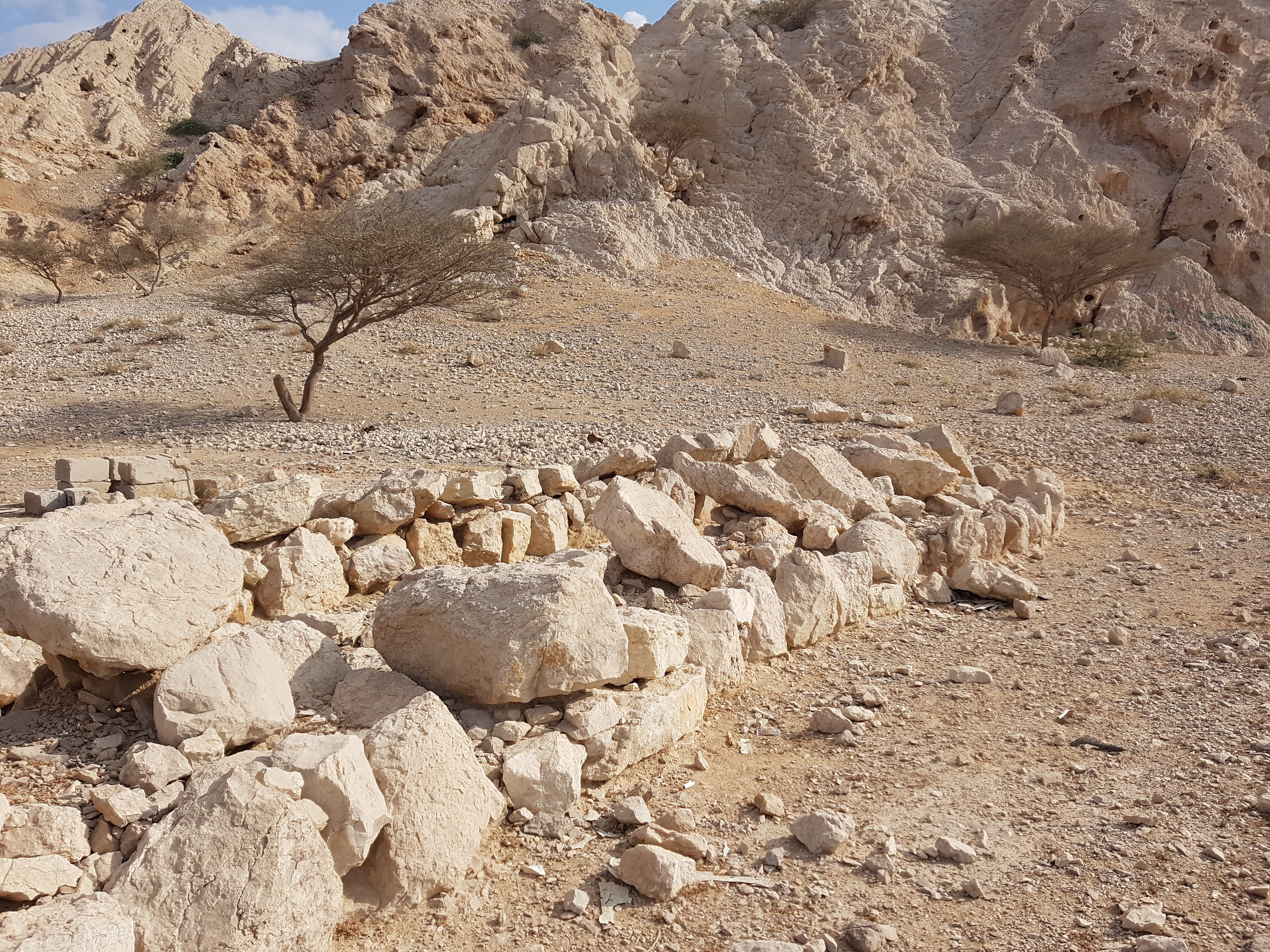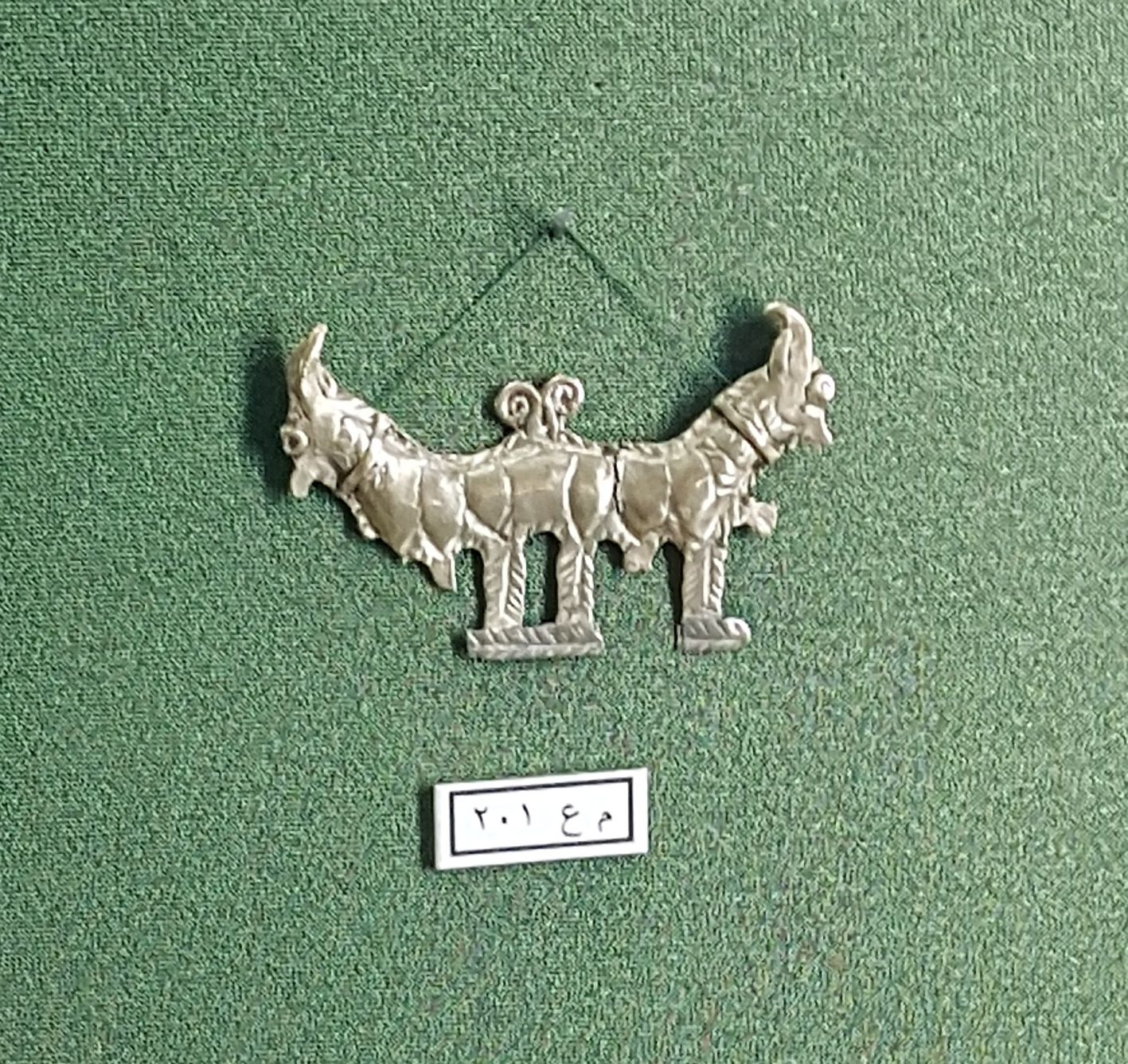Wadi Suq culture on:
[Wikipedia]
[Google]
[Amazon]
 The Wadi Suq culture defines human settlement in the
The Wadi Suq culture defines human settlement in the
 The transition between Umm Al Nar and Wadi Suq is thought to have taken some 200 years and more, with finds at the important Wadi Suq site of Tell Abraq in modern Umm Al Qawain showing evidence of the continuity of Umm al-Nar burials. Evidence of increased mobility among the population points to a gradual change in human habits rather than sudden change and important Wadi Suq era sites such as Tell Abraq, Ed Dur, Seih Al Harf, Shimal and Kalba show an increasing sophistication in copper and bronze ware as well as trade links both east to the Indus Valley and west to Mesopotamia. Wadi Suq era pottery is also seen as more refined and distinctive, with finds of painted ware common, and the development of soft-stone vessels.
Studies of human remains from the period do point to a process of aridification taking place over the centuries contiguous between the Umm Al Nar and Wadi Suq periods, but do not support a sudden or cataclysmic movement or societal change rather a gradual shift in culture.
The Wadi Suq people not only domesticated
The transition between Umm Al Nar and Wadi Suq is thought to have taken some 200 years and more, with finds at the important Wadi Suq site of Tell Abraq in modern Umm Al Qawain showing evidence of the continuity of Umm al-Nar burials. Evidence of increased mobility among the population points to a gradual change in human habits rather than sudden change and important Wadi Suq era sites such as Tell Abraq, Ed Dur, Seih Al Harf, Shimal and Kalba show an increasing sophistication in copper and bronze ware as well as trade links both east to the Indus Valley and west to Mesopotamia. Wadi Suq era pottery is also seen as more refined and distinctive, with finds of painted ware common, and the development of soft-stone vessels.
Studies of human remains from the period do point to a process of aridification taking place over the centuries contiguous between the Umm Al Nar and Wadi Suq periods, but do not support a sudden or cataclysmic movement or societal change rather a gradual shift in culture.
The Wadi Suq people not only domesticated
 Wadi Suq era weaponry shows a marked increase in sophistication, with an explosion in metallurgy taking place in the region. A number of tombs have been found with hundreds of weapons and other metal artefacts and long swords, bows and arrows became the predominant weapons. Long swords found at
Wadi Suq era weaponry shows a marked increase in sophistication, with an explosion in metallurgy taking place in the region. A number of tombs have been found with hundreds of weapons and other metal artefacts and long swords, bows and arrows became the predominant weapons. Long swords found at
 The Wadi Suq culture defines human settlement in the
The Wadi Suq culture defines human settlement in the United Arab Emirates
The United Arab Emirates (UAE; ar, اَلْإِمَارَات الْعَرَبِيَة الْمُتَحِدَة ), or simply the Emirates ( ar, الِْإمَارَات ), is a country in Western Asia ( The Middle East). It is located at ...
and Oman
Oman ( ; ar, عُمَان ' ), officially the Sultanate of Oman ( ar, سلْطنةُ عُمان ), is an Arabian country located in southwestern Asia. It is situated on the southeastern coast of the Arabian Peninsula, and spans the mouth of ...
in the period from 2,000 to 1,300 BCE. It takes its name from a wadi
Wadi ( ar, وَادِي, wādī), alternatively ''wād'' ( ar, وَاد), North African Arabic Oued, is the Arabic term traditionally referring to a valley. In some instances, it may refer to a wet ( ephemeral) riverbed that contains water on ...
, or waterway, west of Sohar
Sohar ( ar, صُحَار, also Romanized as Suḥār) is the capital and largest city of the Al Batinah North Governorate in Oman. An ancient capital of the country that once served as an important Islamic port town, Suhar has also been credited ...
in Oman and follows on from the Umm Al Nar culture. Although archaeologists have traditionally tended to view the differences in human settlements and burials between the Umm Al Nar and Wadi Suq periods as the result of major external disruption (climate change, the collapse of trade or threat of war), contemporary opinion has moved towards a gradual change in human society which is centred around more sophisticated approaches to animal husbandry as well as changes in the surrounding trade and social environments.
History
 The transition between Umm Al Nar and Wadi Suq is thought to have taken some 200 years and more, with finds at the important Wadi Suq site of Tell Abraq in modern Umm Al Qawain showing evidence of the continuity of Umm al-Nar burials. Evidence of increased mobility among the population points to a gradual change in human habits rather than sudden change and important Wadi Suq era sites such as Tell Abraq, Ed Dur, Seih Al Harf, Shimal and Kalba show an increasing sophistication in copper and bronze ware as well as trade links both east to the Indus Valley and west to Mesopotamia. Wadi Suq era pottery is also seen as more refined and distinctive, with finds of painted ware common, and the development of soft-stone vessels.
Studies of human remains from the period do point to a process of aridification taking place over the centuries contiguous between the Umm Al Nar and Wadi Suq periods, but do not support a sudden or cataclysmic movement or societal change rather a gradual shift in culture.
The Wadi Suq people not only domesticated
The transition between Umm Al Nar and Wadi Suq is thought to have taken some 200 years and more, with finds at the important Wadi Suq site of Tell Abraq in modern Umm Al Qawain showing evidence of the continuity of Umm al-Nar burials. Evidence of increased mobility among the population points to a gradual change in human habits rather than sudden change and important Wadi Suq era sites such as Tell Abraq, Ed Dur, Seih Al Harf, Shimal and Kalba show an increasing sophistication in copper and bronze ware as well as trade links both east to the Indus Valley and west to Mesopotamia. Wadi Suq era pottery is also seen as more refined and distinctive, with finds of painted ware common, and the development of soft-stone vessels.
Studies of human remains from the period do point to a process of aridification taking place over the centuries contiguous between the Umm Al Nar and Wadi Suq periods, but do not support a sudden or cataclysmic movement or societal change rather a gradual shift in culture.
The Wadi Suq people not only domesticated camel
A camel (from: la, camelus and grc-gre, κάμηλος (''kamēlos'') from Hebrew or Phoenician: גָמָל ''gāmāl''.) is an even-toed ungulate in the genus ''Camelus'' that bears distinctive fatty deposits known as "humps" on its back. ...
s, but there is evidence they also planted crops of wheat, barley and dates. A gradual shift away from coastal to inland settlements took place through the period.
Burials
Some of the most obvious evidence of the change in human habits and society following the Umm Al Nar period can be found in the distinctive burials of the Wadi Suq people, notably in Shimal in Ras Al Khaimah where over 250 burial sites are located. In some cases, cut stone from Umm Al Nar burials has been used to build Wadi Suq graves. Wadi Suq burials are long chambers entered from the side and many have been found to have been used for subsequent burials. Although Shimal has the most extensive Wadi Suq burials, grave sites are to be found throughout the UAE and Oman and vary from simple barrows to sophisticated structures. The notable Jebel Buhais burial ground, the oldest radiometrically dated burial site in the UAE, is an extensive necropolis, consisting of burial sites spanning theStone
In geology, rock (or stone) is any naturally occurring solid mass or aggregate of minerals or mineraloid matter. It is categorized by the minerals included, its Chemical compound, chemical composition, and the way in which it is formed. Rocks ...
, Iron
Iron () is a chemical element with symbol Fe (from la, ferrum) and atomic number 26. It is a metal that belongs to the first transition series and group 8 of the periodic table. It is, by mass, the most common element on Earth, right in ...
, Bronze and Hellenistic
In Classical antiquity, the Hellenistic period covers the time in Mediterranean history after Classical Greece, between the death of Alexander the Great in 323 BC and the emergence of the Roman Empire, as signified by the Battle of Actium i ...
ages of human settlement in the UAE. The widespread area of burials exhibits a number of important Wadi Suq tombs, including a unique clover-leaf shaped burial chamber, but has no evidence of Umm Al Nar era burials, although there are burials representing later eras, including the Hellenistic
In Classical antiquity, the Hellenistic period covers the time in Mediterranean history after Classical Greece, between the death of Alexander the Great in 323 BC and the emergence of the Roman Empire, as signified by the Battle of Actium i ...
. The clover-shaped Wadi Suq period tomb at Jebel Buhais, BHS 66 stands as a unique piece of funerary architecture in the UAE.
Artefacts
 Wadi Suq era weaponry shows a marked increase in sophistication, with an explosion in metallurgy taking place in the region. A number of tombs have been found with hundreds of weapons and other metal artefacts and long swords, bows and arrows became the predominant weapons. Long swords found at
Wadi Suq era weaponry shows a marked increase in sophistication, with an explosion in metallurgy taking place in the region. A number of tombs have been found with hundreds of weapons and other metal artefacts and long swords, bows and arrows became the predominant weapons. Long swords found at Qattara
The Qattara Depression ( ar, منخفض القطارة, Munḫafaḍ al-Qaṭṭārah) is a depression in northwestern Egypt, specifically in the Matruh Governorate. The depression is part of the Western Desert of Egypt.
The Qattara Depressi ...
, Qidfa, Qusais and Bidaa bint Saud are double-edged and hilted. Light throwing spears also marked the weaponry of the time. Many of these weapons were cast in bronze. One grave excavated in Shimal had no fewer than 18 fine bronze arrowheads.
Another explosive growth industry in the Wadi Suq era was the production of soft-stone vessels. While in the preceding Umm al-Nar era these were distinctively decorated with dotted circles, they now gained incised patterns of lines and are found in some profusion.
The relative wealth and growing metallurgical sophistication of the Wadi Suq people is displayed by finds of jewellery, including gold and electrum plaques depicting back to back animals. Ongoing links with both Dilmun and the Indus Valley have been demonstrated.
See also
* List of Ancient Settlements in the UAE * Archaeology of the United Arab EmiratesReferences
{{Reflist Ancient Near East History of the United Arab Emirates History of Oman Archaeological sites in Oman